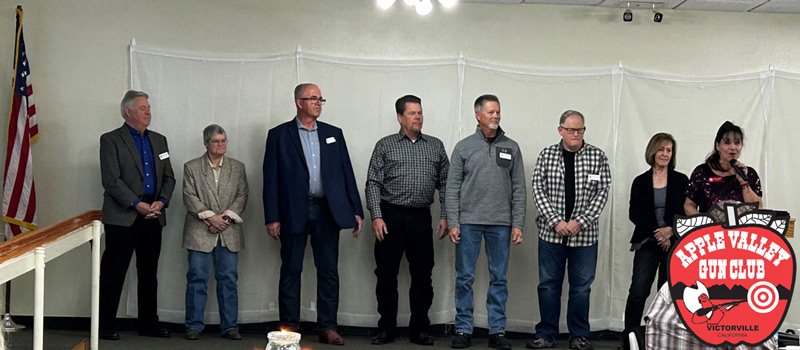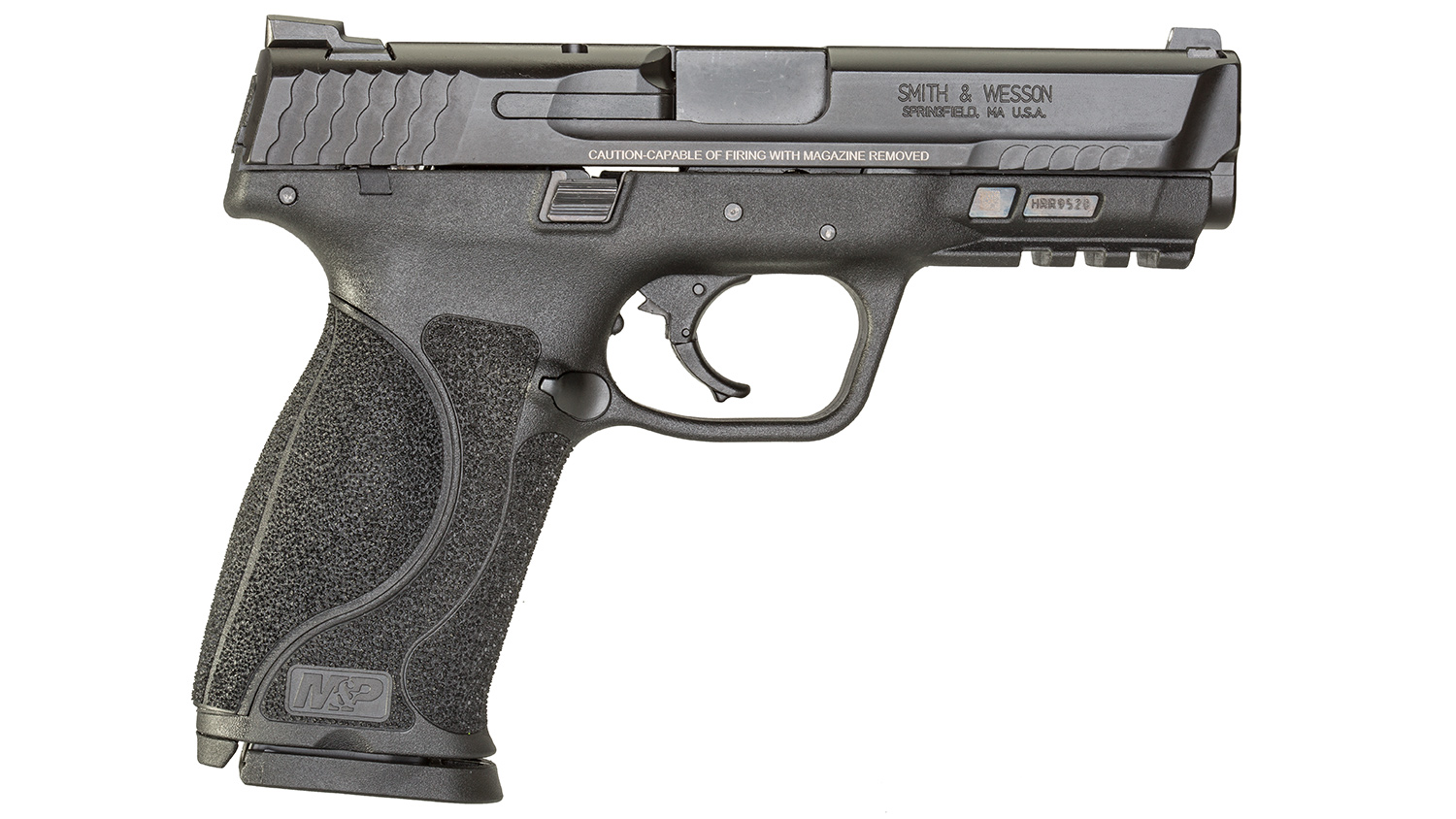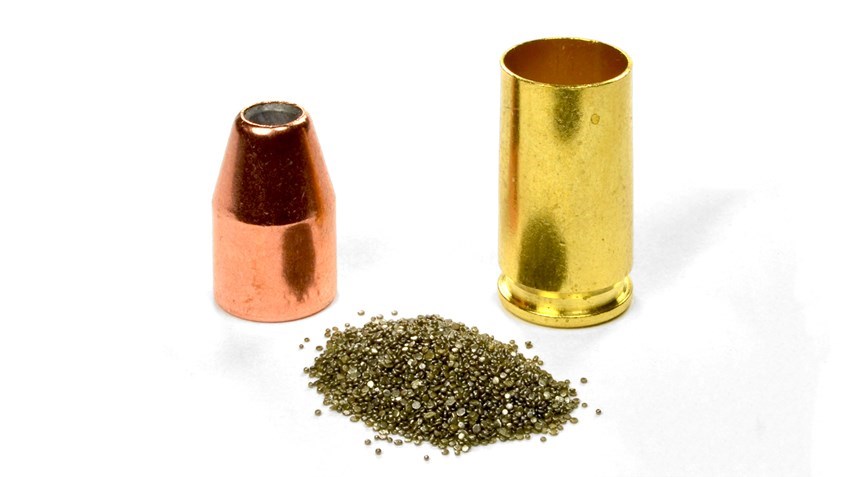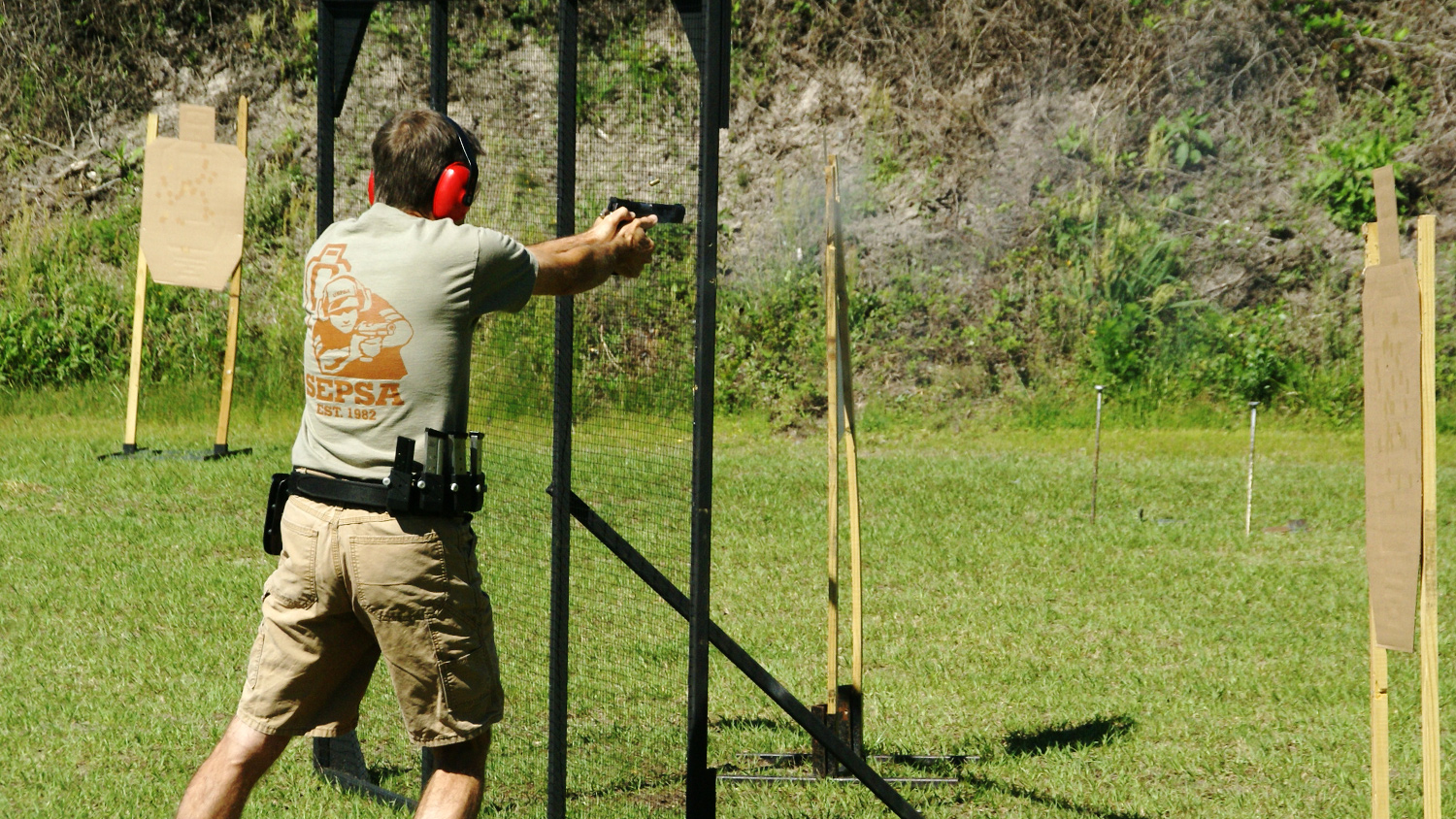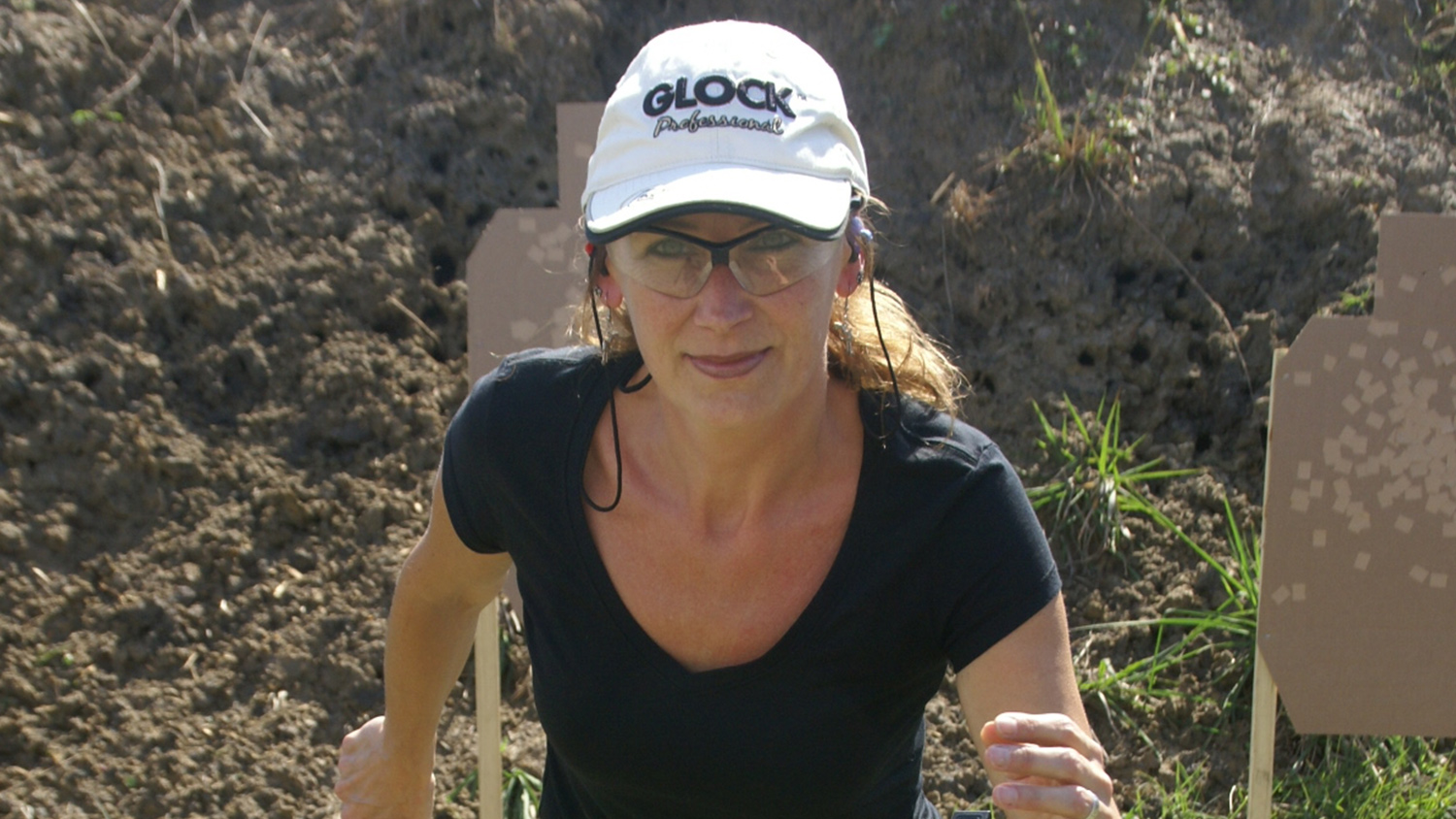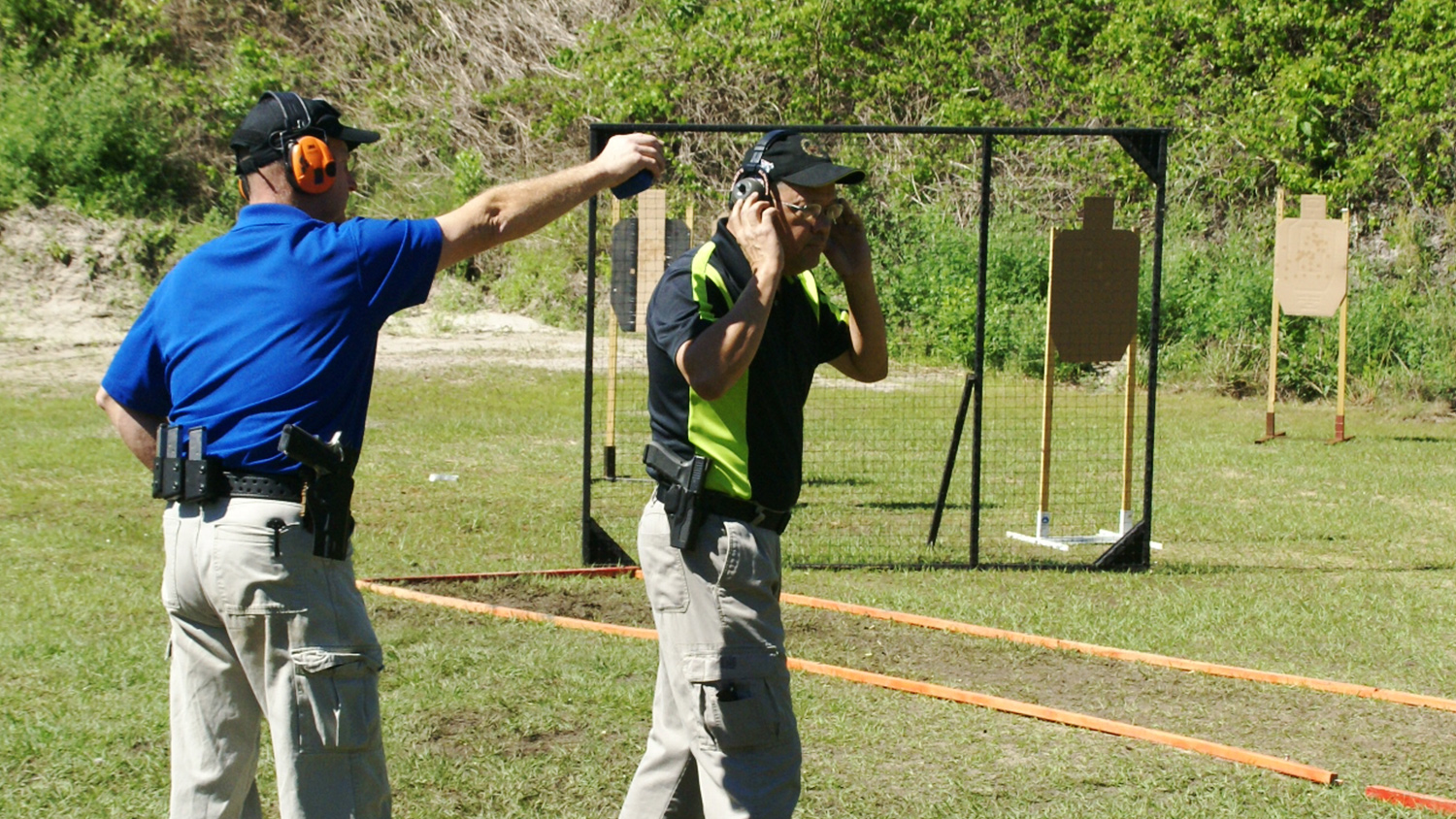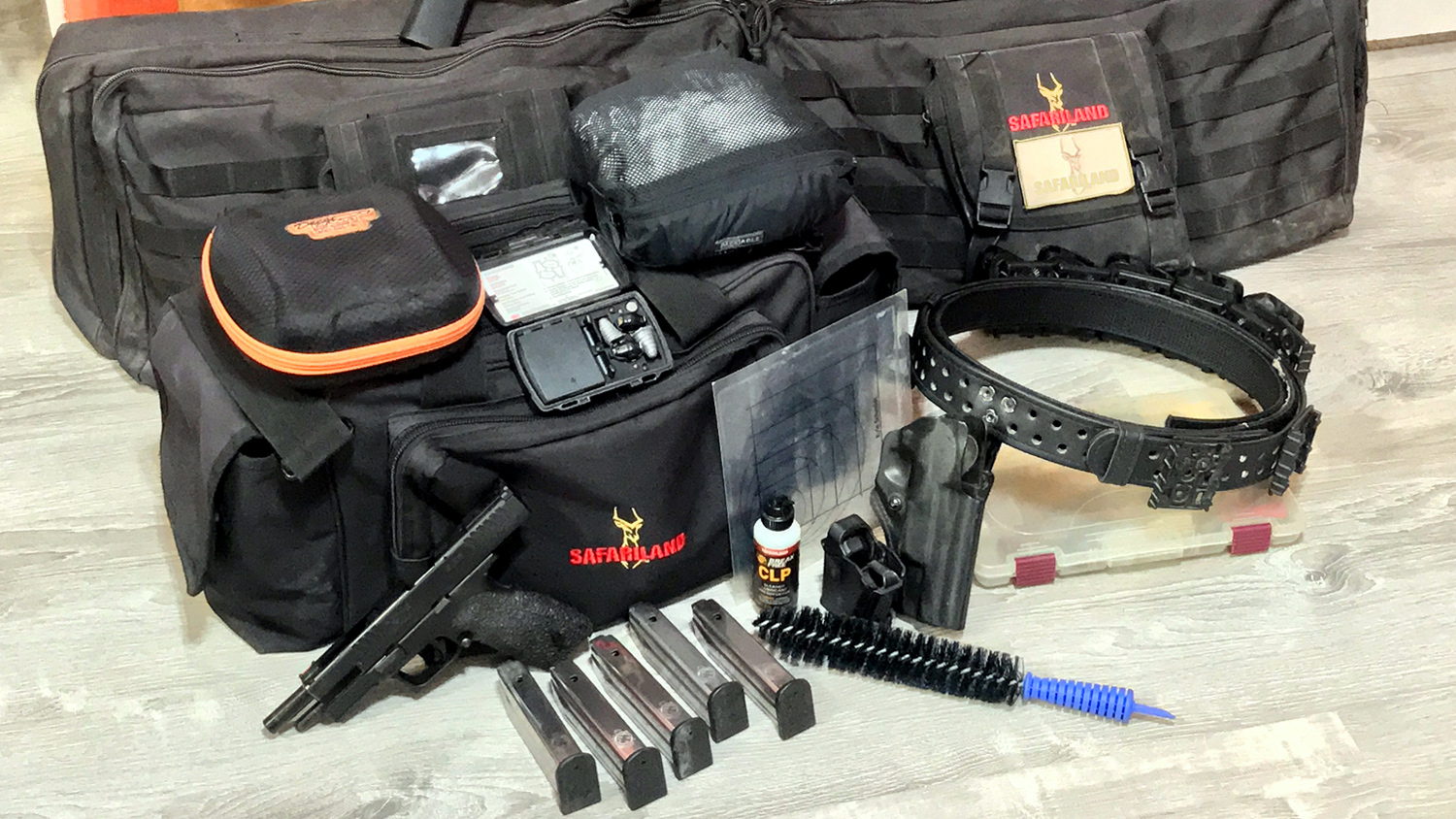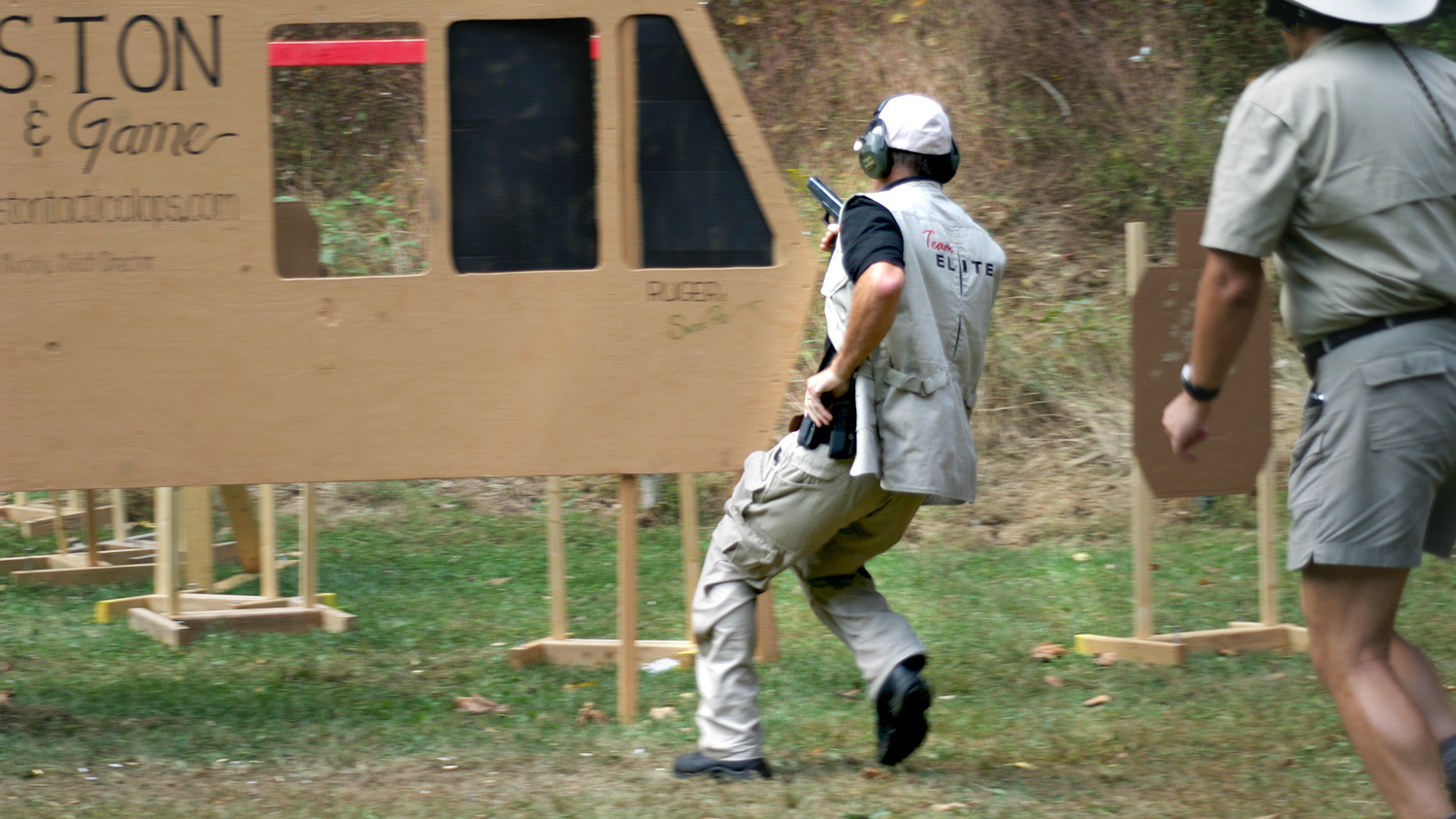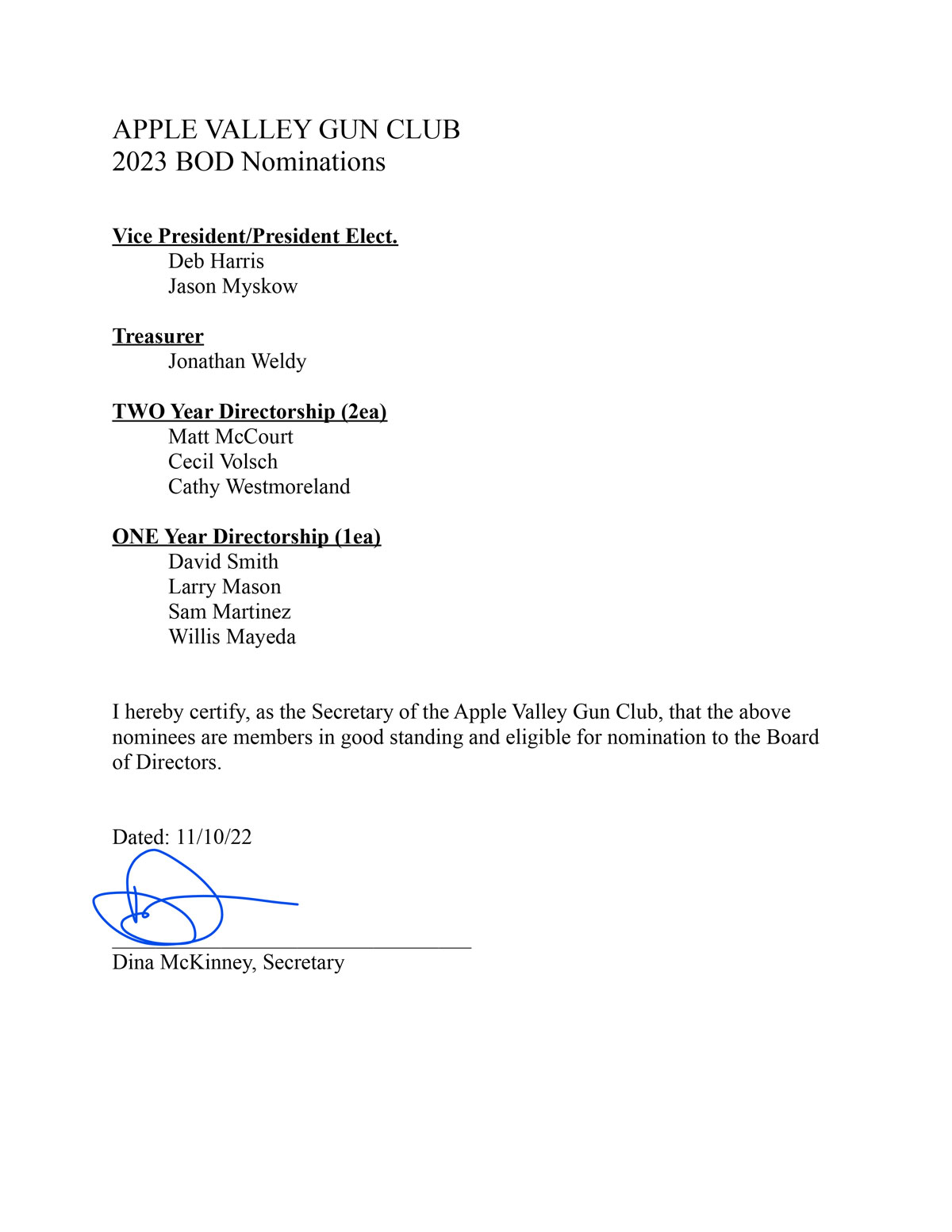March 2023 Legislation/Litigation Update
March Focus— ATF Pistol Brace Rule-2021R-08F
The final rule was published in the Federal Register on January 31, and the compliance date is May 31, 2023. The rule outlines the factors ATF would consider when evaluating firearms equipped with a purported “stabilizing brace” (or other rearward attachment) to determine whether these firearms would be considered a “rifle” or “short-barreled rifle” under the Gun Control Act of 1968, or a “rifle” or “firearm” subject to regulation under the National Firearms Act. The rule’s amended definition of “rifle” clarifies that the term “designed, redesigned, made or remade, and intended to be fired from the shoulder” includes a firearm that is equipped with an accessory, component, or other rearward attachment (e.g., a “stabilizing brace”) that provides surface area that allows the firearm to be fired from the shoulder, provided other factors, as listed in the definition, indicate the firearm is designed and intended to be fired from the shoulder.
These “other factors” include, for example, sights with eye relief that require the firearm to be fired from the shoulder and whether the firearm has a “weight or length consistent with the weight or length of similarly designed rifles.” There are additional criteria in the rule, including whether the surface area that allows the firearm to be fired from the shoulder is created by a buffer tube, receiver extension, or any other accessory, component, or other rearward attachment that is necessary for the cycle of operations.
A pistol with a brace may be defined as a “short-barreled rifle” by the ATF rule change. Short-barreled rifles are banned in California, by California Penal Code section 33210, and require registration and a special permit under federal law in other states.
Any California resident possessing a pistol with a brace that is redefined as a short-barreled rifle under this new rule must do one of the following, prior to May 31, 2023:
- Replace the barrel with one at least 16 inches long and ensure an overall length of 26 inches.
- Permanently remove and dispose of, or alter, the “stabilizing brace” such that is cannot be reattached.
- Turn in the firearm to your local ATF office.
- Destroy the firearm.
A description of the rule and requirements published by the ATF can be found here: https://www.atf.gov/rules-and-regulations/docs/undefined/finalrule2021r-08f508pdf/download
Legislation
California SB 2, as amended, Portantino. Firearms.
This is an extensive bill that will substantially alter CCW issuance and concealed carry in California. Currently at the Senate Committee on Public Safety and scheduled for a hearing March 28.
Note: This bill has a multiple page summary. To find current, reliable information on this bill before the California legislature you can go to: https://leginfo.legislature.ca.gov/faces/billNavClient.xhtml?bill_id=202320240SB2
California AB 28, as introduced, Gabriel. Firearms: gun violence protection tax.
Existing law imposes various taxes, including taxes on the privilege of engaging in certain activities. The Fee Collection Procedures Law, the violation of which is a crime, provides procedures for the collection of certain fees and surcharges.
This bill would state the intent of the Legislature to enact legislation that would enact a tax to fund measures to protect against gun violence on firearms and ammunition.
California AB 29, as introduced, Gabriel. Firearms: California Do Not Sell List.
Existing law makes possession of a firearm by certain classes of persons, including a convicted felon, a person convicted of specified misdemeanors, a person has been found mentally incompetent to stand trial, a person has been found not guilty of specified crimes by reason of insanity, or a person has been placed under conservatorship, a crime. Existing law additionally makes it a crime to sell or give possession of a firearm to these classes of persons prohibited from owning a firearm.
Existing law requires the Department of Justice, upon submission of firearm purchaser information by a licensed firearm dealer, to examine its records to determine whether a potential firearm purchaser is prohibited by state of federal law from possessing, receiving, owning, or purchasing a firearm. Existing law requires the department to participate in the National Instant Criminal Background Check System.
This bill would require the Department of Justice to develop and launch a secure Internet-based platform to allow a person who resides in California to voluntarily add their own name to the California Do Not Sell List. The bill would require the department to ensure that information on the list is uploaded and reflected in the National Instant Criminal Background Check System. The bill would make it a crime, punishable as A misdemeanor, to transfer a firearm to a person who is validly registered on the California Do Not Sell List. By creating a new crime, this bill would impose a state-mandated local program.
This bill would allow a person, after a specified period of time, to request removal from the list. (As amended on 2/14.)
The bill would allow a person registered on the list to file a petition in Superior Court requesting to have their name removed from the registry. The bill would require the court to hold a hearing and order removal of the person’s name if they establish by a preponderance of the evidence that they are not at elevated risk of suicide.
The bill would require the State Department of Public Health to create and distribute informational materials about the California Do Not Sell List to general acute care hospitals and acute psychiatric hospitals. The bill would specify that a person presenting in a general acute care hospital or acute psychiatric hospital who is at a substantially elevated risk of suicide should be presented with these informational materials. The bill would specify that any suicide hotline maintained or operated by an entity funded in whole or in part by the state should generally inform callers on how to access the California Do Not Sell List Internet-based platform.
Recommended “do pass” as amended by Public Safety Committee. Referred to the Assembly Committee on Health.
California SB 8, as introduced, Blakespear. Firearms.
Existing law authorizes a court to issue a temporary gun violence restraining order prohibiting a person from possessing a firearm or ammunition if there is reasonable cause to believe that a person poses a significant danger of harm to themselves or to another person by having a firearm.
This bill would state the intent of the Legislature to enact legislation relating to gun violence prevention.
California SB 54, as introduced, Skinner. Firearms.
Existing law requires any firearm sold, transferred, or manufactured in this state to include certain firearm safety devices and the packaging of any firearm and any descriptive material that accompany any firearm to bear a label with a specified warning statement. Existing law makes a violation of these provisions punishable by a fine on the first offense, a fine and prohibition from the manufacturing or selling of firearms in this state for 30 days on the second offense, and a permanent prohibition from the manufacturing or selling of firearms in this state on the third offense.
This bill would make technical, non-substantive changes to these provisions.
California AB 92, as introduced, Connolly. Body armor: prohibition.
Existing law makes it a felony for a person who has been convicted of a violent felony to purchase, own, or possess body armor. Existing law authorizes a person subject to that prohibition, whose employment, livelihood, or safety is dependent on the ability to legally possess and use body armor, to file a petition for an exception to the prohibition with the chief of police or county sheriff of the jurisdiction in which the person seeks to possess and use the body armor, as provided.
This bill would make it a misdemeanor for a person who is prohibited from possessing a firearm under the laws of this state to purchase, own, or possess body armor, as specified.*
*Amended to only apply to prohibited persons.
Amended in the Assembly Committee on Public Safety and recommended “do pass”. Referred to Committee on Appropriations.
California AB 97, as introduced, Rodriguez. Firearms: unserialized firearms.
Existing federal law requires a commercially produced firearm to be etched or otherwise inscribed by the manufacturer with a unique serial number. Existing state law prohibits the alteration, removal, or obliteration of that serial number. A violation of this prohibition is punishable as a felony. Existing law also prohibits the transfer or possession of a firearm with a serial number that has been altered, removed, or obliterated. A violation of this prohibition is punishable as a misdemeanor.
Existing law requires a person, other than a licensed manufacturer, who assembles or manufactures a firearm, or any person who possesses an unserialized firearm, to obtain a unique serial number from the Department of Justice and to inscribe that serial number on the firearm, as specified. A violation of this requirement is punishable as a misdemeanor.
This bill would make the possession of an unserialized firearm or possession of a firearm with an altered, removed, or obliterated serial number punishable as a felony. By increasing the punishment for these crimes, this bill would impose a state-mandated local program.
Referred to Committee on Public Safety. Two hearings have been scheduled and then canceled at the author’s request.
California SB 241, as introduced, Min. Firearms: dealer requirements.
Existing law prohibits any person from selling, leasing, or transferring any firearm unless the person is licensed as a firearms dealer, as specified. Existing law prescribes certain requirements and prohibitions for licensed firearms dealers. A violation of any of these requirements or prohibitions is grounds for forfeiture of a firearms dealer’s license.
This bill would require a licensee and any employees that handle firearms to annually complete specified training. The bill would require the Department of Justice to develop and implement an online training course, as specified, including a testing certification component.
Referred to Committee on Public Safety and scheduled for hearing on March 14.
California AB 36, as introduced, Gabriel. Domestic violence protective orders: possession of a firearm.
Existing law prohibits a person subject to a protective order, as defined, from owning, possessing, purchasing, or receiving a firearm while that protective order is in effect and makes a willful and knowing violation of a protective order a crime.
This bill would state the intent of the Legislature to enact legislation to extend that prohibition for an additional 3 years after the expiration of a protective order, unless the court finds the person to not be a threat to public safety.
California AB 27, as introduced, Ta. Sentencing: firearms enhancements.
Existing law generally authorizes a court to dismiss an action or to strike or dismiss an enhancement in the furtherance of justice. Existing law requires a court to dismiss an enhancement if it is in the furtherance of justice to do so, except if dismissal of that enhancement is prohibited by any initiative statute.
This bill would also prohibit a court from dismissing a firearms-related enhancement, as defined.
Referred to Committee on Public Safety and failed passage at first hearing.
California SB 243, as introduced, Seyarto. Sales and Use Tax Law: exemption: gun safety systems.
Existing state sales and use tax laws impose a tax on retailers measured by the gross receipts from the sale of tangible personal property sold at retail in this state, or on the storage, use, or other consumption in this state of tangible personal property purchased from a retailer for storage, use, or other consumption in this state. The Sales and Use Tax Law provides various exemptions from those taxes.
This bill would, until January 1, 2028, exempt from those taxes the gross receipts from the sale in this state of, and the storage, use, or other consumption in this state of, a gun safety system, as defined.
Referred to Committee on Government and Finance.
California SB 368, as introduced, Portantino. Firearms: requirements for licensed dealers.
Existing law regulates licensed firearms dealers and provides that a license is subject to forfeiture for a breach of specified prohibitions in existing law. Existing law authorizes the temporary transfer of a firearm without a firearms dealer’s participation to a person who is 18 years of age or older for safekeeping to prevent it from being used to attempt suicide, as specified.
This bill would require a licensed firearms dealer to accept for storage a firearm transferred by an individual to prevent it from being accessed or used to attempt suicide. The bill would also authorize a licensed firearms dealer to accept for storage a firearm for a lawful purpose not otherwise stated in the law. The bill would make these provisions subject to certain conditions and would establish a procedure for the return of a firearm to the original transferor, including situations when a dealer cannot legally return a firearm. A violation of various provisions involving the transfer of firearms is a crime. By changing the scope of these offenses, this bill would impose a state-mandated local program.
Existing law states that the requirement that the sale, delivery, or transfer of a firearm be conducted by a firearms dealer does not apply to the sale, delivery, or transfer to an authorized representative of a government, as specified, and the government is acquiring the firearm as part of an authorized, voluntary program.
This bill would require a licensed firearm dealer to establish a voluntary program to repurchase firearms from individuals in consultation with the Department of Justice.
The California Constitution generally provides that the Legislature has no power to authorize lotteries and shall prohibit the sale of lottery tickets in the state, except for private, nonprofit, eligible organizations to conduct raffles as a funding mechanism to provide support for their own or another private, nonprofit, eligible organization’s beneficial and charitable works, subject to certain conditions.
This bill would prohibit a licensed firearms dealer from offering an opportunity to win an item of inventory in a game dominated by chance and would except from this prohibition nonprofit organizations under certain circumstances.
Existing law, subject to exceptions, provides that any person who has been convicted of certain misdemeanors may not, within 10 years of the conviction, own, purchase, receive, possess, or have under their custody or control, any firearm and makes a violation of that prohibition a crime. Existing law authorizes a court in certain circumstances to reduce, eliminate, or condition that prohibition.
This bill would, subject to exceptions, provide that any person convicted of a misdemeanor violation of the above-described prohibition on or after January 1, 2024, and who within 10 years of that conviction owns, purchases, receives, possesses, or has under their custody or control, any firearm guilty of a misdemeanor or a felony. Because a violation of these provisions would be a crime, and because this bill would expand the application of the crime to a larger class of potential offenders, this bill would impose a state-mandated local program. The bill would additionally require the Department of Justice to create an evaluation process to determine whether an extension of a 10-year prohibition is warranted. The bill would, for those subject to such a prohibition due to a conviction on or after January 1, 2024, require the department to review whether the prohibition should be extended, provide notice and opportunity to be heard to the person, and establish a process for the person to appeal any extension of the prohibition instituted by the department.
Referred to Committee on Public Safety and scheduled for Hearing March 28.
California AB 574, as introduced, Jones-Sawyer. Firearms: concealed carry licenses.
Existing law authorizes the sheriff of a county or the chief or other head of a municipal police department of any city or city and county to issue a license to carry a concealed firearm to an applicant for that license if the applicant is of good moral character, good cause exists for issuance of the license, the applicant meets specified residency requirements, and the applicant has completed a specified course of training, acceptable to the licensing authority. Existing law requires the course of training to include instruction on firearm handling and shooting technique and to also include a demonstration by the applicant of shooting proficiency and safe handling of each firearm the applicant will be licensed to carry and to include live-fire exercises conducted on a firing range.
This bill would make technical, nonsubstantive changes to those provisions.
California AB 303, as introduced, Davies. Firearms: prohibited persons.
Existing law requires the Attorney General to establish and maintain an online database known as the Prohibited Armed Persons File, sometimes referred to as the Armed Prohibited Persons System, to cross-reference persons who have ownership or possession of a firearm, and who, subsequent to the date of ownership or possession of that firearm, fall within a class of persons who are prohibited from owning or possessing a firearm. Existing law requires the Attorney General to provide investigative assistance to local law enforcement agencies to better ensure the investigation of individuals who are armed and prohibited from possessing a firearm.
This bill would require that investigative assistance to include all investigative notes, reports, and related materials on individuals listed in the Prohibited Armed Persons File.
This bill would require the Attorney General to provide specific information to local law enforcement agencies involving prohibited persons, including, but not limited to, personal identifying information, case status, and information regarding previous contact with the prohibited person, as specified. The bill would require local law enforcement agencies to designate at least one employee to receive this information. By imposing new duties on local law enforcement agencies, this bill would impose a state-mandated local program.
The California Constitution requires the state to reimburse local agencies and school districts for certain costs mandated by the state. Statutory provisions establish procedures for making that reimbursement.
This bill would provide that, if the Commission on State Mandates determines that the bill contains costs mandated by the state, reimbursement for those costs shall be made pursuant to the statutory provisions noted above.
Referred to Committee on Public Safety, and recommended “do pass” as amended. Referred to Committee on Appropriations.
California AB 455, as introduced, Quirk-Silva. Firearms: prohibited persons.
Existing law prohibits a person who has been convicted of a felony offense or a specified misdemeanor domestic violence offense from possessing or receiving a firearm. Existing law prohibits a person who has been convicted of specified misdemeanor offenses within the previous 10 years from possessing or receiving a firearm. Existing law prohibits a person who has been taken into custody because that person is a danger to themselves or others, or has been certified for intensive treatment due to a mental disorder or mental illness, from possessing or receiving a firearm, as specified. Existing law prohibits a person who has been placed under conservatorship by a court, has been found mentally incompetent to stand trial, has been found not guilty of specified crimes due to reason of insanity, has been adjudicated by a court to be a danger to others as a result of a mental disorder or mental illness, or who has been adjudicated to be a mentally disordered sex offender from possessing or receiving a firearm, as specified. A violation of any of the prohibitions is punishable as a crime.
Existing law authorizes a court to grant pretrial diversion, for a period no longer than 2 years, to a defendant suffering from a mental disorder, on an accusatory pleading alleging the commission of a misdemeanor or felony offense, in order to allow the defendant to undergo mental health treatment.
This bill would prohibit any person who has completed mental health diversion for specified offenses from thereafter possessing or receiving a firearm, as specified.
Referred to Committee on Public Safety.
California AB 725, as introduced, Lowenthal. Firearms: reporting of lost and stolen firearms.
Existing law requires a person to report any lost or stolen firearm to a law enforcement agency, as specified. A violation of this provision is punishable as an infraction or misdemeanor. Existing law also requires the sheriff or chief of the law enforcement agency receiving such a report to enter a description of the lost or stolen firearm into the Department of Justice Automated Firearms System. Existing law defines a firearm for purposes of these provisions.
This bill would amend how a firearm is defined for purposes of these provisions to include the frame or receiver of the firearm, including both a completed frame or receiver, or a firearm precursor part.
Referred to the Committee on Public Safety.
California SB 377, as introduced, Skinner. Firearms: peace officer exemptions.
(1) Existing law prohibits a firearms dealer from delivering a firearm within 10 days after the application to purchase or after notice by the Department of Justice that the applicant is not ineligible to possess a firearm, as specified, whichever is later. Existing law exempts from this prohibition the delivery of a firearm to a full-time paid peace officer, as defined, with written authorization from the head of the officer’s employing agency. Existing law also exempts from this prohibition the delivery of a firearm to another dealer, the delivery of a firearm to a person possessing a special weapons permit issued by the Department of Justice, or the delivery of a firearm that is a curio or relic, as defined.
This bill would remove the 10-day waiting period exemption for a peace officer and instead exempt the delivery of a firearm purchased by a law enforcement agency, as defined, to an authorized law enforcement representative of that law enforcement agency for exclusive use by that agency if written authorization, as defined, from the head of the agency authorizing the delivery is presented to the person making the delivery.
(2) Existing law defines the characteristics of an unsafe handgun. Existing law requires the Department of Justice to compile, publish, and thereafter maintain a roster listing all of the handguns that have been tested by a certified testing laboratory, have been determined not to be unsafe handguns, and may be sold in this state. Existing law prohibits the sale or transfer of a handgun not listed on this roster.
Existing law exempts from this prohibition the sale or purchase of a handgun sold to certain law enforcement agencies and any sworn member of those entities, as specified.
This bill would remove from this exemption the sale or purchase of a handgun sold to a sworn member of these exempt agencies, thereby applying the exemption only to the sale or purchase of a handgun directly to the exempt law enforcement agencies.
Referred to the Committee on Public Safety.
California SB 452, as introduced, Blakespear. Firearms.
Existing law, subject to exceptions, generally makes it an offense to manufacture or sell an unsafe handgun, as defined, and requires the Department of Justice to compile a roster listing all of the handguns that have been tested and determined not to be unsafe handguns. Existing law establishes criteria for determining if a handgun is an unsafe handgun, including, for firearms manufactured after a certain date and not already listed on the roster, the lack of a chamber load indicator, magazine disconnect mechanism, and technology that transfers a microscopic array of characters from the firearm to the cartridge case when the firearm is fired, known as a microstamp.
This bill would express the intent of the Legislature to enact subsequent legislation relating to firearm microstamping.
Referred to Rules Committee.
Note: to find current, reliable information on any bill before the California legislature you can go to: https://leginfo.legislature.ca.gov/faces/home.xhtml
Note: italic and underlined information is a change from last month’s report.
Litigation
A status conference on Miller v Bonta, Duncan v Bonta, and Rhode v Bonta was held 13 December in Judge Benitez’ court.
Judge Benitez indicated that he wants to see these cases completed at the trial court level in a timely manner. He questioned the value of the state bringing in testimony from experts in “history and tradition” and rejected this testimony. The judge indicted that he may combine the three cases and hold hearings on all three at once. The judge indicated that he was not sympathetic to the state trying to delay the process or confuse any of the issues.
Miller v Bonta is the challenge to the “assault weapon” ban, Duncan v Bonta is the challenge to the “High-Capacity Magazine” ban, and Rhode v Bonta is the challenge to the state requiring background checks for ammunition purchases.
Nguyen v Bonta is a challenge to the California “1 in 30” law limiting purchases of handguns or center-fire semi-auto rifles to 1 in 30 days. The judge has asked for briefs regarding how this case should be handled in light of the Bruen decision.
Boland v Bonta is a lawsuit challenging the California “Not-Unsafe” handgun roster. Following the first court date, the judge has requested, and received, supplemental briefs from both parties before ruling.
Rupp v Bonta, a challenge to the California Assault Weapon Bans, had been pending the Bruen decision. This case has been remanded back to the trial court for further proceedings consistent with the Bruen decision. This case is now scheduled behind the Miller v Bonta case, which also challenges the “Assault Weapon Ban”.
Young v Hawaii challenges the state of Hawaii carry restrictions. The certiorari petition was granted, the Supreme Court vacated the Ninth Circuit judgement, and remanded the case back to the Ninth Circuit Court of Appeals for further consideration in light of New York State Rifle and Pistol Association v Bruen. The Ninth Circuit remanded the case back to the trial court.
Doe v Bonta is a lawsuit filed by the NRA to block the release of gun owner’s personal information to UC Davis and other, unspecified, “research organizations” due to SB 173. Information has already been given to UC Davis and accidentally released to the public. The honorable Larry Alan Burns, the United States District Court Judge hearing the case, has ordered supplemental briefs regarding the effects of NYSRPA v Bruen on the standard to be used in deciding this case.
Renna v Bonta on the California Unsafe handgun roster has been remanded back to the trial court. Currently calendared for March of 2023.
Respectfully submitted,
David Smith


